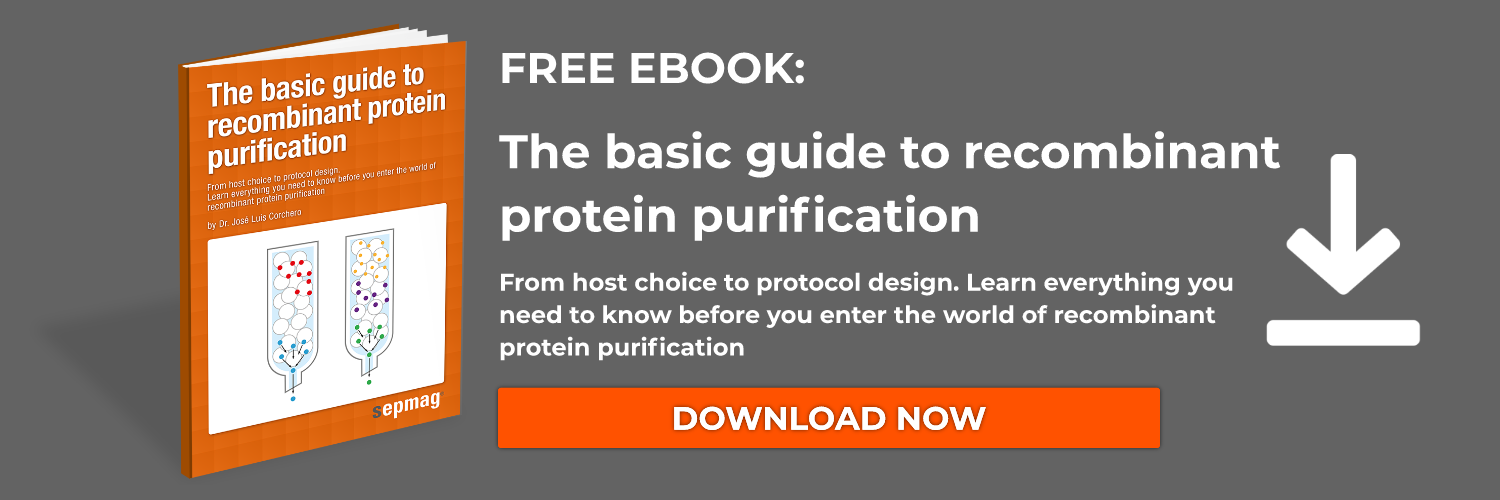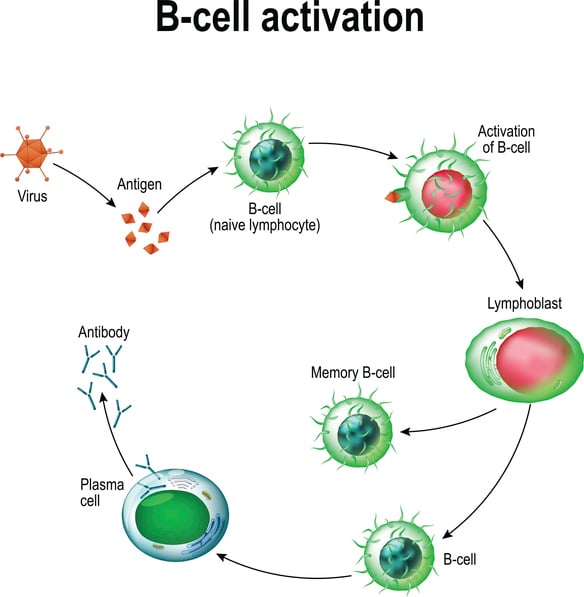An antigen is a toxin or other foreign molecule that induces an immune response in the body. Antigens may exist in the environment in various forms but can also develop from inside the host. Antigens can present as proteins or sugars, and are located on the surfaces of all cells. When antigens invade the body, antibodies act as a first line of defense. They target and bind to antigens through what’s known as a paratope-epitope interaction (named after the binding regions on each molecule) and then undergo a series of steps to effectively eliminate them. Each specific antibody produced by the immune system is custom-fitted to the antigen that initially stimulated the immune response. The interaction of antibodies and antigens is so specific that it can be utilized in clinical diagnostics, specifically through the use of functionalized magnetic beads that can detect and capture a specific analyte.
Function of Antigens and Antibodies
Antigens can broadly be categorized into four different groups. Exogenous antigens are foreign to the host system, like pollen, viruses, parasites, and fungi. Endogenous antigens live inside the body and exist as cells that are infected by a virus or bacteria. Autoantigens, comparatively, are formed in the body as a result of mutation, neoantigen formation, or exposure of previously hidden self-antigens. Lastly are tumor antigens produced by (you guessed it!) tumor cells. Antibodies, also referred to as an immunoglobulin (Ig) are Y-shaped molecules that have paratopes located off the “arms”. Different types of antibodies have varying conformations, are secreted by different organs, and have distinct functions. In all, five isoforms of Igs have been identified in humans, though twelve have been identified across species.
The strength of antigen-antibody binding is determined by a number of factors. The amino acids attraction between the paratope and epitope must be strong, but the structure and shape of the antigen and antibody must also be compatible to allow for efficient protein folding. Antibodies can obtain higher affinities towards antigens by repeatedly undergoing a process called affinity maturation. The interaction between antigen and antibody is so specific that even small changes in the antigen can render a previously matched antibody ineffective. The adaptive immune system is designed to battle the inevitable antigenic mutations that occur in pathogens, rendering it a vital part of disease control.
What are Magnetic Beads With Antigen and Antibody?
The antibody-antigen interaction is incredibly important for the immune system, and for this reason has been a powerful tool in clinical diagnostics and biomedical research. These assays use the magnetic beads which have been functionalized to reversibly bind to specific antibodies. Once the magnetic beads are bound to antibodies, a magnetic field is used to capture the bound complexes and all unbound antibodies in the solution can be removed.
Next the magnetic field is withdrawn and a sample is added, containing the antigen. Antigens in the sample will bind to the antibody-magnetic bead complexes, and through the use of a magnetic force all non-target molecules within a sample can be further removed. The use of magnetic beads to capture antibodies and antigens can be used in diverse downstream applications including nucleic acid enrichment or depletion for next generation sequencing, immunoprecipitation or other immunoassays,, protein purification, or cell magnetic sorting.

Related news
- Direct and Indirect Elisa protocol
- Meet Sepmag at AACC in Atlanta
- Basic Guide for optimizing Chemiluminescent immunoassay (CLIA) performance and scaling-up
Published on November 25, 2019 and updated on December 28, 2023.




